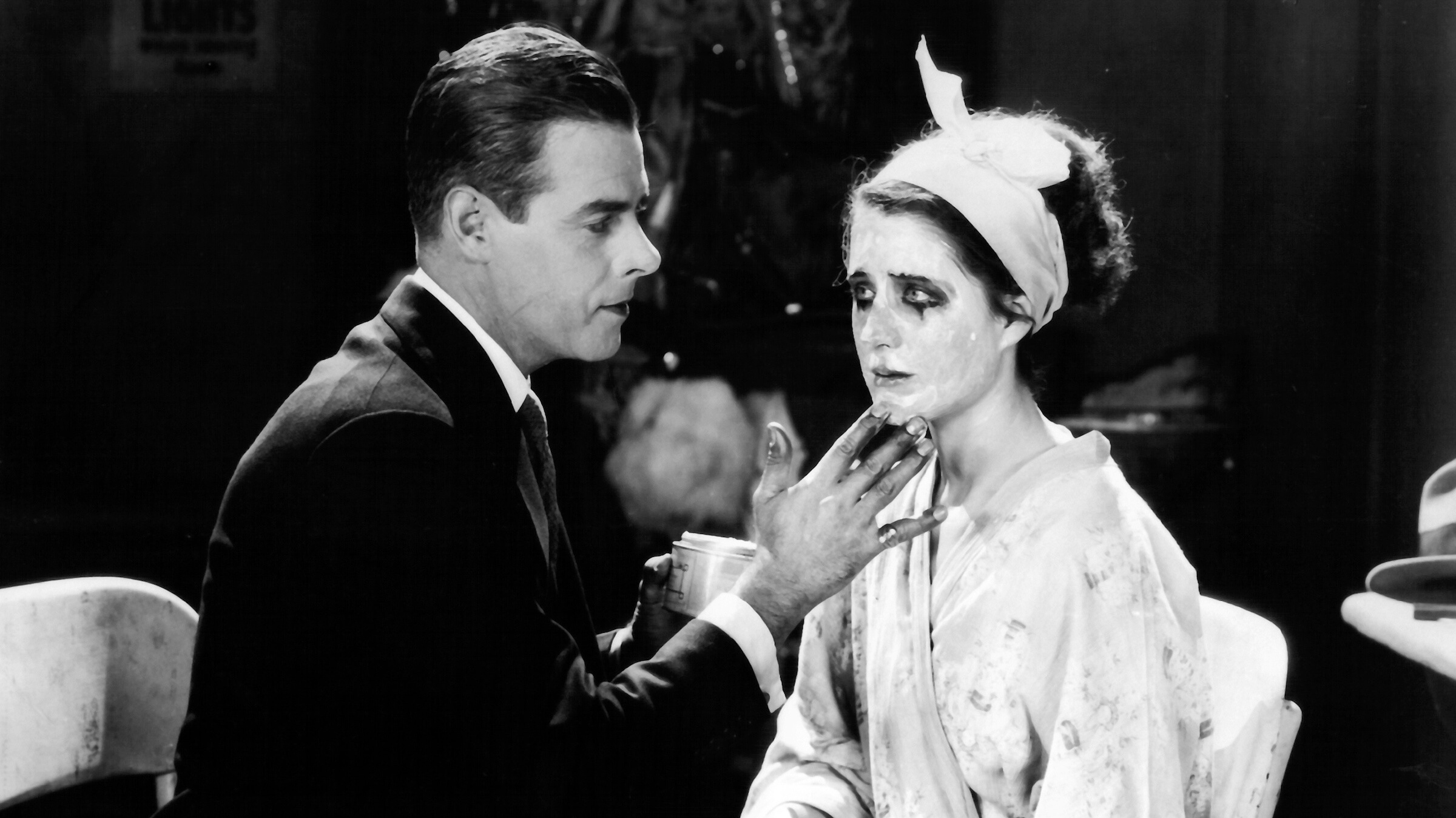When Upstage, originally known as The Mask of Comedy, opened in 1926, it was praised for its behind the scenes look at the life of traveling vaudevillians. “The troupers are shown in their dressing rooms, in the restaurant, and even at the railroad station. You sense the tediousness of the existence …. Mr. Bell’s glimpses of life in the wings are filmed with splendid sincerity.” (New York Times, November 1926)
The leads, Oscar Shaw and Norma Shearer, received warm notices for their performances, too. In her February 1927 review for Motion Picture magazine, Gladys Hall wrote: “Oscar Shaw is human, appealing, convincing. And we all know Norma. She is particularly good in these impersonations of a stage, circus or vaudeville girl. There is considerable drama, a great many deft touches, reality and compassion.”
Shaw was a musical comedy star on Broadway, and his first film was appropriately enough The Great White Way (1924). Upstage was his second film and, although he appeared in only four more, one of them was The Cocoanuts (1929), starring the Marx Brothers and produced by the director of Upstage, Monta Bell.
Shearer on the other hand was on the brink of mega-stardom. She had broken into show biz in her native Montreal by playing the piano in a nickelodeon. When the family fell on hard times, her mother pinned the family’s fortunes on a more substantial show business career for Norma and her sister, moving the three of them to New York to take their shot at the big time. It was Norma’s career that took off. She was rejected as chorus girl for the Ziegfeld Follies, but soon she was working as an extra in movies.
Beginning with bit parts in The Flapper (1920) and Way Down East (1920), in short order she was landing progressively bigger parts, like her featured role in The Stealers (1920). In 1923 she signed with Metro Pictures, the studio that would become MGM, and moved to Hollywood. It was there Shearer had her breakthrough film when she starred in He Who Gets Slapped (1924) with Lon Chaney and John Gilbert. In 1927, she made what was arguably her finest career move when she acquired MGM’s boy genius and head of production, Irving Thalberg, as both mentor and husband. She then went on to a series of important parts in first-class vehicles: The Student Prince of Old Heidelberg (1927), The Latest from Paris (1928) and, her final silent, A Lady of Chance (1928). Shearer was one of the few silent stars to make the transition to talkies with ease, winning the Academy Award for Best Actress for her role in The Divorcee (1930). After Thalberg’s death in 1936, her career suffered, as her husband had been astute at picking the right scripts for her. She retired from acting after Her Cardboard Lover (1942), but she retained her substantial stock holdings in MGM. As a result, she was able to influence the studio from behind the scenes. It was Shearer, for example, that discovered Janet Leigh (at a ski lodge) and shepherded her to stardom.
Monta Bell, the director of Upstage, began his professional life as a newspaperman. Eventually his interests turned cinematic and he found a new career at MGM. He broke into films with directing and, within two years, had added screenwriting and producing to his credits. His triple-threat film career ran longer than 20 years, beginning in 1924 with The Snob, a film that marked his first collaboration with Norma Shearer, and ending in 1945 with his final film China’s Little Devils.
Melissa Chittick and Stephen Salmons are the founders of the San Francisco Silent Film Festival.
Presented at SFSFF 1997 with live music by Michael Mortilla

